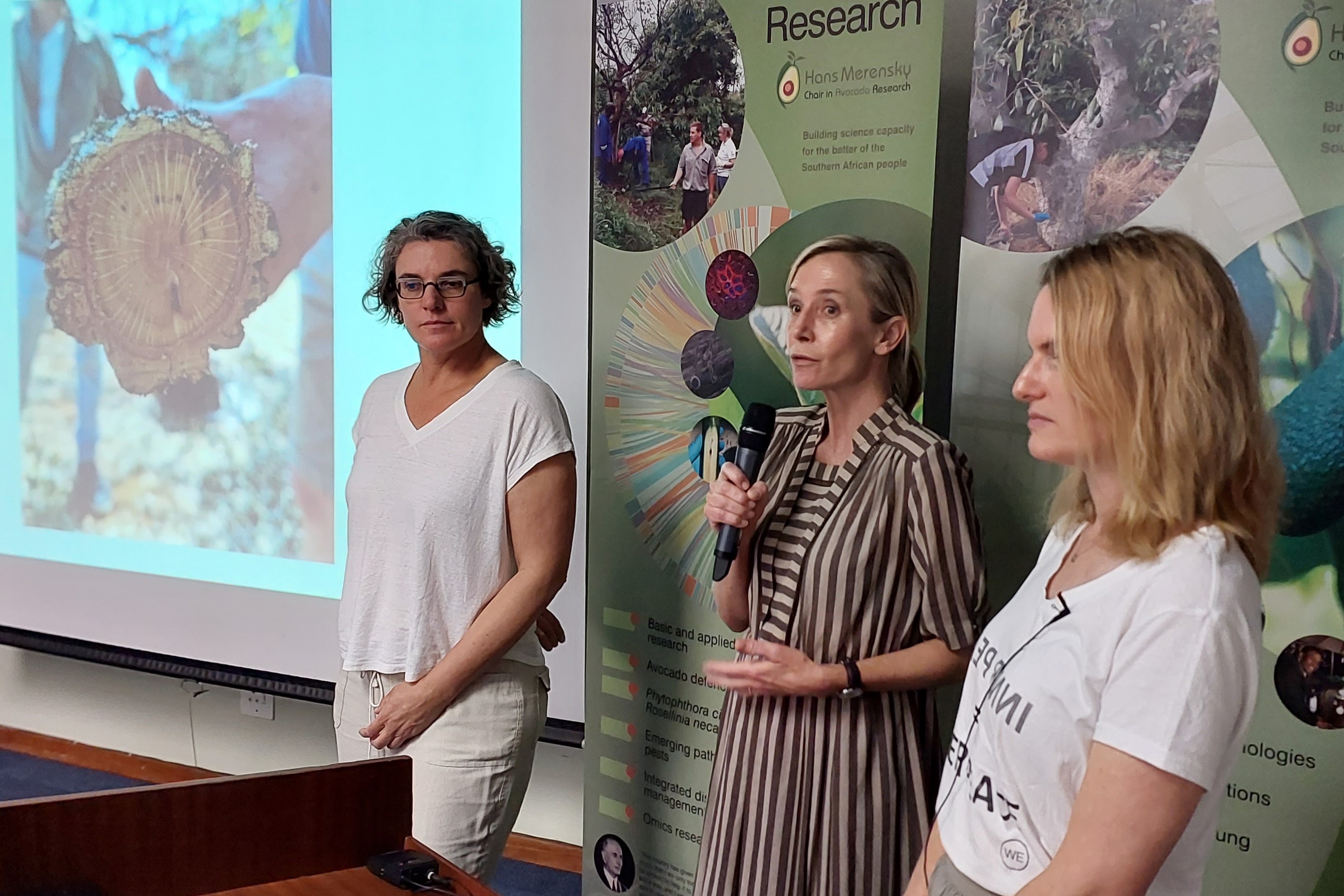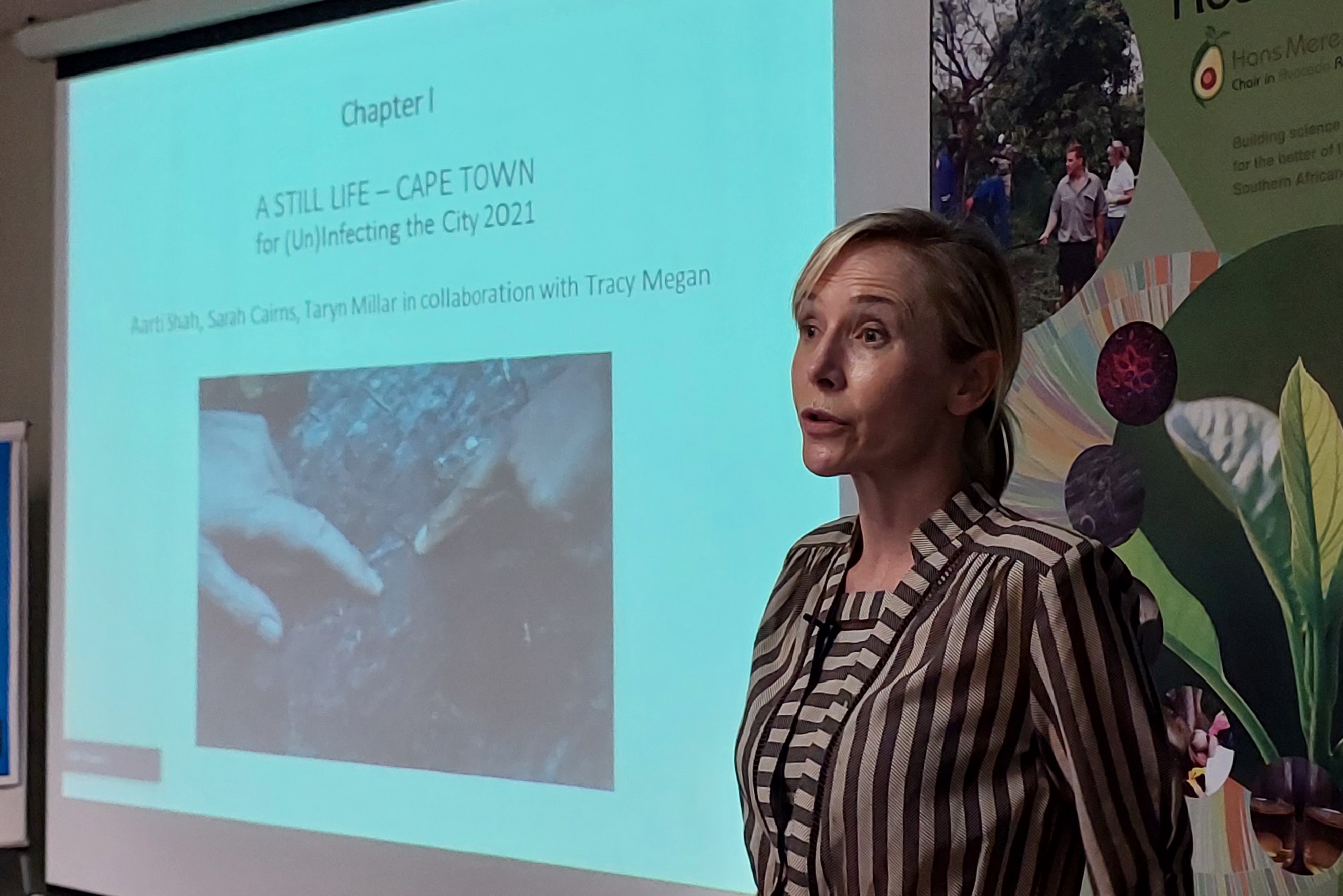Artists from the Art and Trees project visit FABI 2022-10-20
Three artists, Hannelie Coetzee, Tracy Megan and Tarryn Millar attended the FABI Monday Morning Meeting on 17 October, specifically to engage with the FABI community regarding their deep interest in the intersections between science and art. The background to this visit emerged from their ephemeral art project 'A Still Life'. This recently concluded project was part of the (Un)Infecting the City 2021 arts festival, a virtual festival organised by the city of Cape Town aimed at making art “a shared, public, open-access encounter”. They explained how this was designed to draw attention to six dead or dying trees in Cape Town and presented an alternative experience of mourning loss and death through the lens of a tree. They explained that viewing a city through the lens of dying trees could offer us an alternative experience; one that places our human existence within a greater natural context. Art that responds sensitively to the stories of the trees provides the viewer with an opportunity to consider a moment of stillness and beauty in the cyclical nature of life.
Following their success with ‘A Still Life’ project, they were awarded a Social Impact Prize by the Rupert Museum, which includes funding for a similar project in Johannesburg. For this proposal they have drawn on the research being conducted by FABI on the impact of the Polyphagous shothole borer (PSHB) on existing tree populations in Johannesburg. They explained how they recently met with FABIans Dr Tudy Paap and Felipe Balocchi at the Johannesburg Botanical Gardens in Emmarentia where they were shown first-hand the damage this invasive borer has wrought on the city’s trees.
Following the presentation, Prof. Bernard Slippers, FABI Director highlighted the significant interest that the FABI team have in art and its importance in science and science communication. He made mention of the fact that there are numerous accomplished artists in or associated with FABI and that some of their works can be found on the walls of the Institute. Furthermore he expressed a hope that there would be further engagement between this group of artists and FABI in the future and that this would serve to improve the appreciation of art in science and science in art.




